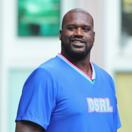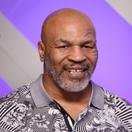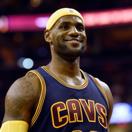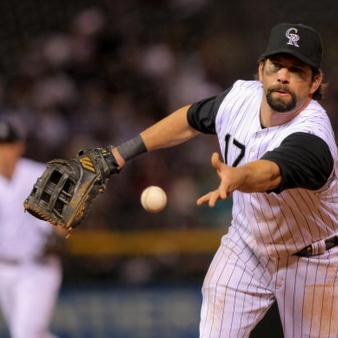- Category:
- Richest Athletes › Baseball Players
- Net Worth:
- $8 Million
- Birthdate:
- May 6, 1931 (92 years old)
- Birthplace:
- Westfield
- Gender:
- Male
- Height:
- 5 ft 10 in (1.8034 m)
- Profession:
- Baseball player
- Nationality:
- United States of America
What is Willie Mays's Net Worth?
Willie Mays is a former professional baseball player who has a net worth of $8 million. Willie Mays played in the MLB from 1951 to 1973, mostly with the New York / San Francisco Giants. Regarded as one of the greatest baseball players of all time, he won 12 consecutive Gold Glove Awards and helped lead the Giants to a World Series title in 1954. Mays ended his playing career with the New York Mets, retiring after the team's loss in the 1973 World Series.
Salary, Contracts and Endorsements
Willie Mays made a total of $1,148,467 in salary and contracts during his 22-year career. His highest salary was $180,000 in 1973, which would be worth about $1.2 million today. He led the league in salary 10 times, and was one of the highest-paid players in baseball for most of his career.
Here is a breakdown of Mays' career earnings:
- 1951-1957: $7,500 per year
- 1958: $65,700
- 1959-1963: $100,000 per year
- 1964: $105,000
- 1965: $125,000
- 1966-1969: $150,000 per year
- 1970-1972: $165,000 per year
- 1973: $180,000
In addition to his salary, Mays also earned money from endorsements and other ventures. He was one of the most popular athletes in the world during his playing days, and his endorsement deals included products such as Coca-Cola, Wheaties, and Ford.
Early Life and Education
Willie Mays Jr. was born on May 6, 1931 in Westfield, Alabama to Annie and Cat. Both of his parents were athletes, with his mother having been a basketball and track star in high school and his father a baseball player with the black team at the local iron plant. Mays's parents separated when he was three, and he was subsequently raised by his father and aunts. He was educated at Fairfield Industrial High School, where he played multiple sports, including football and basketball.
Negro and Minor League Career
Still in high school, Mays started playing professional baseball with the Negro minor league team the Chattanooga Choo-Choos in the summer of 1948. He soon joined the Negro American League's Birmingham Black Barons, with which he made it to the 1948 Negro World Series. In the tournament, the Barons lost to the Homestead Grays. Although a number of MLB teams showed interest in signing Mays during this time, they had to wait until he graduated from high school. Following his graduation, he was signed by the New York Giants. Mays went on to play in the minors for the Interstate League's Class B Trenton Giants and the American Association's Class AAA Minneapolis Millers.
New York Giants
Mays was called up to the Giants in May of 1951. In his 13th at-bat in the MLB on May 28, he hit his first career home run. Mays finished the regular season batting .274 with 20 home runs and 68 RBIs, good enough for NL Rookie of the Year honors. He and the Giants went on to reach the 1951 World Series, which they lost to the New York Yankees. After the end of the season, Mays was drafted by the US Army in the Korean War. He played the first few weeks of the 1952 season with the Giants before heading off to Fort Eustis, Virginia, where he spent much of his time playing on military baseball teams. Mays was discharged from the Army on the first day of March in 1954, after which he returned to the Giants for spring training. His 1954 season was one of his best, as he won the NL MVP Award and the Hickok Belt en route to a World Series title. In Game 1 of the World Series, Mays made an over-the-shoulder running catch that would go down in history as one of the greatest plays in baseball history.
In the 1955 season, Mays led the league with 51 home runs. The next season, he hit 36 homers and stole a career-high 40 bases, making him the second player to join the 30-30 club. In 1957, Mays won the inaugural Gold Glove Award, the first of his 12 consecutive Gold Gloves. Following the 1957 season, the Giants decided to move to San Francisco due to dwindling attendance numbers and the desire for a new ballpark. In the team's final home game at the Polo Grounds in New York, Mays was given a standing ovation from fans during the middle of his final at-bat.
San Francisco Giants
In San Francisco, Mays became the highest-paid baseball player in 1959, with a $75,000 contract. That year, he batted .313 with 34 home runs and 113 RBIs, and led the league in stolen bases for the fourth straight year. In 1960, the Giants moved into the new Candlestick Park, which Mays found difficult to figure out due to its capricious winds. Although he managed only 29 homers that season, he led the NL with 190 hits. The following season, he hit 40 home runs and batted .308. Mays and the Giants had their best season yet in San Francisco in 1962, with Mays leading the team in eight offensive categories. The Giants advanced to the World Series, once again facing off against the Yankees as they had back in New York in 1951. Ultimately, the Yankees won the championship in seven games. In 1963, Mays signed a contract with the Giants worth a record-setting $105,000 per season. He finished the season batting .314 with 38 home runs and 103 RBIs.
Mays was named the captain of the Giants in 1964, making him the first African-American captain of a team in the MLB. That season, he led the NL with 47 home runs. Mays had an even more impressive season in 1965, hitting his 500th career home run in September and finishing the season with a career-high 52 home runs. Moreover, he won his second NL MVP Award. Following a solid but relatively unremarkable 1966 season, Mays entered a slump in 1967. In 141 games played, he batted .263 with 22 home runs and only 70 RBIs. Mays had slight improvements in 1968 with a .289 batting average, 23 home runs, and 79 RBIs. In September of 1969, he hit his 600th career home run. Mays was named by the Sporting News as "Player of the Decade" for the 1960s. Although he performed less exceptionally in the early 1970s, he helped the Giants advance to the NLCS and won the inaugural Roberto Clemente Award. After starting the 1972 season on a dismal note, Mays was traded in early May to the New York Mets.
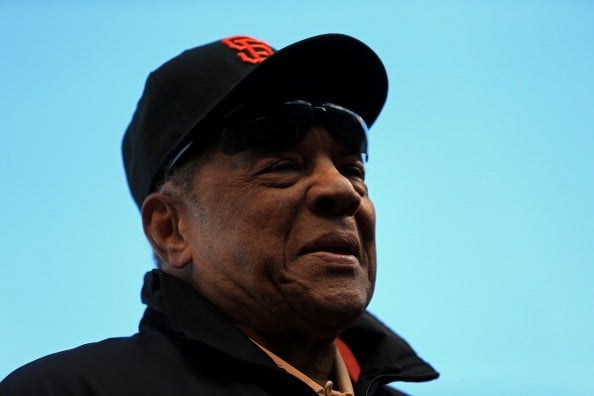
Doug Pensinger / Getty Images
New York Mets
Back in New York, Mays spent his final two seasons in the MLB with the Mets. He played 88 games in his first season with the team in 1972, batting .250 with eight home runs. In his final career season in 1973, Mays spent significant time on the disabled list and batted a career-low .211 with six home runs. Still, the Mets won the NL East and the NLCS en route to the World Series against the Oakland Athletics. Mays had the final at-bat of his career in Game 3 of the tournament. Ultimately, the Athletics won the World Series in seven games. Mays subsequently retired from professional playing.
Post-Playing Career
Following his retirement from professional playing in 1973, Mays remained with the Mets as a hitting instructor until the end of the 1979 season. That year, he was inducted into the National Baseball Hall of Fame. After that, he began working at the Bally's Park Place casino in Atlantic City, New Jersey, where he served as a greeter and a special assistant to the casino president. In 1986, Mays returned to the baseball world to become a special assistant to the president and general manager of his former team the Giants. He also founded his own charity, the Say Hey Foundation, which promotes youth baseball. In 2015, Mays was awarded the Presidential Medal of Freedom by Barack Obama.
Personal Life
In 1956, Mays married Marghuerite Chapman. The pair adopted a baby boy named Michael in 1959, and got divorced in 1963 after having separated the previous year. In the early 1970s, Mays wed Mae Allen, a child-welfare worker. They remained together until 2013, when Allen passed away from Alzheimer's.
Real Estate
For many years, Willie has lived in a 5,000 square foot home in the extremely upscale neighborhood of Atherton, California. It's unclear exactly when or how much he paid for the home but today it is worth at least $7 million.






